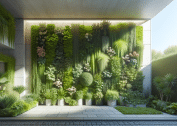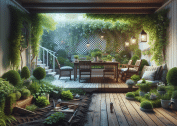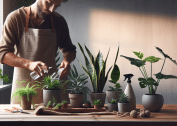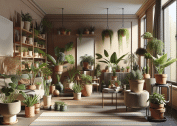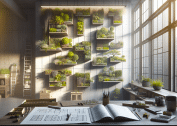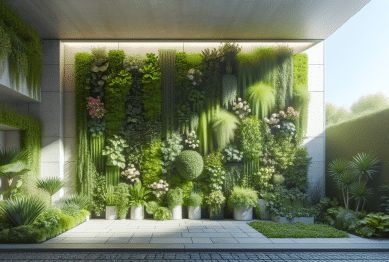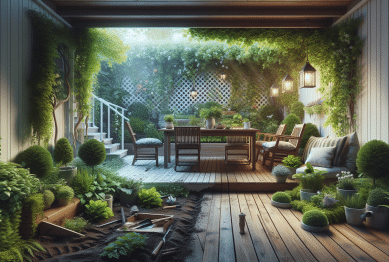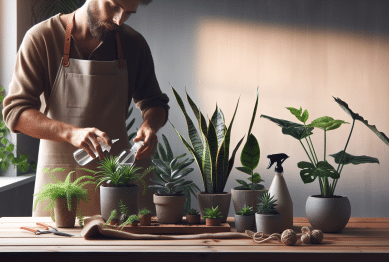Urban living continues to reshape the way we design our homes—and our gardens. As cities grow denser and homes become more compact, outdoor space is increasingly limited. Yet, the desire for greenery, relaxation, and homegrown produce hasn’t disappeared. Instead, it has evolved. One of the most exciting trends leading the way in 2025 is Maximal Minimalism in Small Space Gardening.
This movement blends bold design with efficient use of limited square footage. It prioritizes making a big impact with fewer elements, transforming balconies, patios, and courtyards into lush, functional retreats. The idea isn’t to cram plants into every available spot—it’s about carefully curating your green space so that every container, planter, and vertical surface serves both form and function.
Whether you’re a seasoned gardener downsizing to an urban home or someone just starting with a small balcony garden, Maximal Minimalism in Small Space Gardening offers techniques that balance beauty, productivity, and practicality.
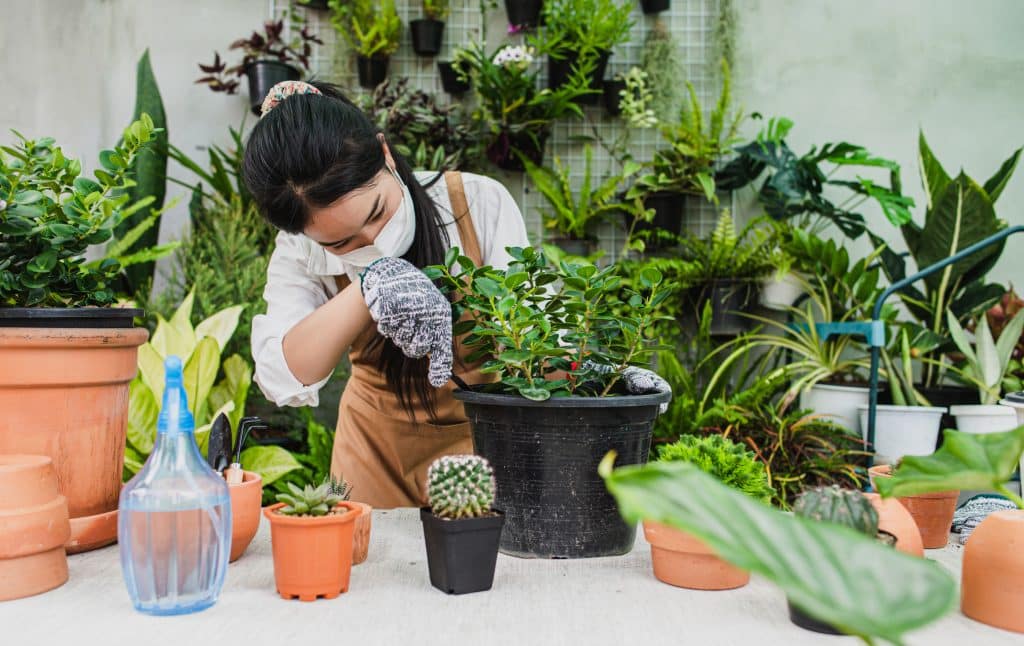
Why Small-Space Gardening Is More Relevant Than Ever
Several cultural and environmental shifts are fueling this trend:
- Compact housing: Apartment living and smaller homes are now common in many cities worldwide. Gardeners need smart ways to maximize small areas.
- Health and wellness: Green spaces contribute to mental well-being and provide a calming refuge from daily stress. Even a few pots of herbs or leafy greens can make a noticeable difference.
- Sustainability: More people are turning to homegrown produce, even in small quantities, to reduce food miles and improve self-sufficiency.
- Style meets functionality: In design-conscious households, gardens are not just about plants—they’re about aesthetics, lifestyle, and usability.
According to The Spruce, 2025 garden trends are leaning toward maximal minimalism, emphasizing large containers, impactful plant choices, and curated arrangements rather than cluttered collections of tiny pots. This approach allows even the smallest spaces to feel expansive and thoughtfully designed.
The Core Principles of Maximal Minimalism
At its heart, Maximal Minimalism in Small Space Gardening is about intentionality. Instead of squeezing in dozens of small containers, the focus is on fewer, bigger, and bolder choices. Here are the core elements:
- Quality over quantity – Choose larger containers and fewer plants that make a statement.
- Functional beauty – Many plants should serve dual purposes, such as being edible and ornamental.
- Space efficiency – Use vertical structures, mobile planters, and layered arrangements.
- Ease of care – Simplicity in design makes maintenance more manageable, reducing stress for busy homeowners.
Key Techniques That Define This Trend
1. Vertical and Living Walls
When ground space is limited, the only way to go is up. Vertical gardening has been around for years, but in 2025 it’s becoming more artistic and structural.
- Trellises and lattices: Perfect for climbing edibles like beans, cucumbers, or even grapevines.
- Living wall panels: Modular systems allow you to grow herbs, flowers, and even vegetables directly on walls.
- Hanging planters: Cascading foliage or trailing edibles like strawberries save space while adding drama.
According to Better Homes & Gardens, vertical gardens are not just space savers—they also soften walls, improve air quality, and provide privacy in crowded urban environments.
2. Wheeled and Mobile Containers
Mobility is an underrated but powerful tool in small-space design. Wheeled containers allow you to:
- Track the sun: Move sun-loving plants across the balcony throughout the day.
- Protect plants: Shift delicate varieties indoors or under cover during storms or extreme weather.
- Rearrange easily: Refresh your layout for gatherings or seasonal transitions without heavy lifting.
Living Etc. highlighted wheeled planters as a 2025 essential for city gardeners, noting their mix of sleek design and practicality.
3. Edible Landscaping (Foodscaping)
Foodscaping, also called edible landscaping, is the integration of edible plants into ornamental designs. This makes every inch of your garden serve a purpose.
Examples include:
- Kale, rainbow chard, and lettuce varieties that add color and texture.
- Herbs like basil, rosemary, and thyme that double as fragrance and food.
- Berry bushes and dwarf fruit trees that act as centerpieces.
This movement not only enhances aesthetics but also reduces grocery costs and provides fresher, more nutritious produce right outside your door.
4. Urban Wild Gardening
Not all gardens have to look perfectly manicured. In fact, urban wild gardening is emerging as a counterbalance to over-designed spaces. This technique recreates natural plant combinations, giving your garden a spontaneous, meadow-like feel.
- Low-maintenance: Requires less pruning and watering than formal arrangements.
- Biodiversity: Attracts pollinators like bees and butterflies.
- Resilient design: Incorporates plants that thrive in challenging urban environments.
Homes & Gardens calls this trend “a greener way of city living,” emphasizing its low-input approach to design and upkeep.
A Practical Guide to Applying Maximal Minimalism
The theory sounds appealing, but how do you actually implement Maximal Minimalism in Small Space Gardening in your own home? Here’s a step-by-step guide.
1: Evaluate Your Space
- Map out available areas: walls, floors, railings, and overhead structures.
- Assess light exposure throughout the day to place plants strategically.
2: Choose the Right Containers
- Select large containers that serve as focal points.
- Use self-watering planters for ease of maintenance.
- Add wheeled planters to increase flexibility.
3: Pick Dual-Purpose Plants
- Combine edibles and ornamentals: lavender (beautiful and aromatic), chili peppers (colorful and edible), or nasturtiums (flowers and edible leaves).
- Opt for evergreens or perennial herbs for year-round interest.
4: Incorporate Verticality
- Use vertical panels for herbs like parsley, thyme, and mint.
- Grow trailing plants like ivy or strawberries for layered texture.
5: Layer and Combine
- Thriller plants: Tall, dramatic focal points (e.g., dwarf fruit trees).
- Filler plants: Bushy midsized plants for bulk (e.g., herbs, leafy greens).
- Spiller plants: Cascading varieties (e.g., sweet potato vine, strawberries).
This “thriller-filler-spiller” method ensures containers look full and dynamic without overcrowding.
6: Keep It Flexible
- Refresh arrangements each season.
- Swap in edible crops for ornamental flowers depending on your goals.
- Rotate containers to extend plant lifespans.
Beyond Plants: Adding Function and Atmosphere
Gardens are more than plants—they’re outdoor living spaces. In small areas, every feature must count.
- Lighting: Solar lanterns, fairy lights, or spotlights create ambiance.
- Furniture: Foldable or built-in seating maximizes space.
- Water features: Even a small tabletop fountain adds soothing sound and motion.
- Sustainability touches: Rainwater collection barrels and composting bins can be scaled down for small patios.
These non-plant elements elevate the space, turning it into a destination rather than just a collection of pots.
The Benefits of Maximal Minimalism
Choosing Maximal Minimalism in Small Space Gardening isn’t just about following trends—it comes with tangible benefits:
- Visual impact: Larger containers and curated designs make small spaces look intentional and stylish.
- Lower maintenance: Fewer but larger plantings are easier to manage.
- Productivity: With foodscaping, you gain both beauty and sustenance.
- Environmental value: Encourages biodiversity and reduces reliance on store-bought produce.
- Mental health boost: Well-designed green spaces provide stress relief and foster creativity.
Final Thoughts
Maximal Minimalism in Small Space Gardening is more than a trend—it’s a lifestyle choice that reflects how we live in 2025. By combining vertical gardening, edible landscaping, mobile planters, and wild natural touches, you can transform even the smallest balcony into a multifunctional green haven.
It’s not about filling space—it’s about making space meaningful. With intentional design, you’ll enjoy a garden that feels expansive, productive, and calming, no matter how small it actually is.
References
- Better Homes & Gardens. (n.d.). Vertical gardening ideas for small spaces. Better Homes & Gardens.
Available at: https://www.bhg.com (Accessed: 18 August 2025). - Homes & Gardens. (2024, April 12). Urban wild gardening trend: What it is and how to do it. Homes & Gardens. Available at: https://www.homesandgardens.com (Accessed: 18 August 2025).
- The Spruce. (2024, December 5). Small space gardening trends for 2025. The Spruce.
Available at: https://www.thespruce.com (Accessed: 18 August 2025).


